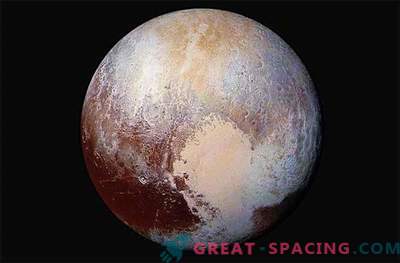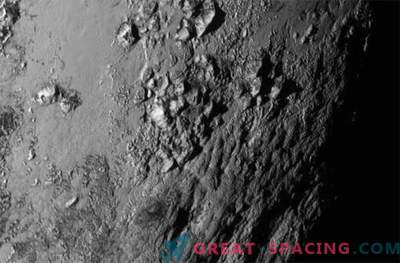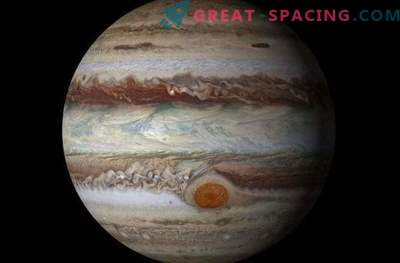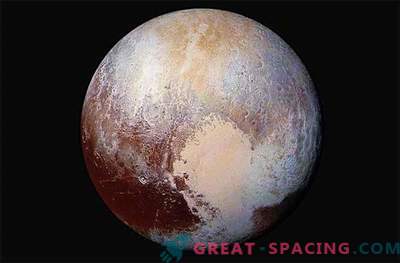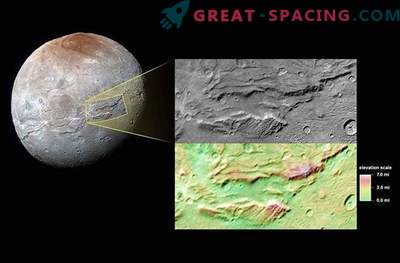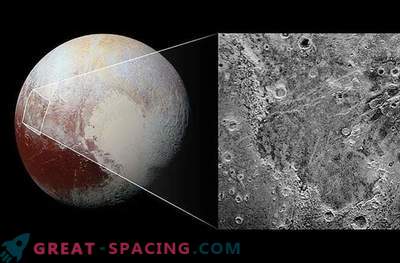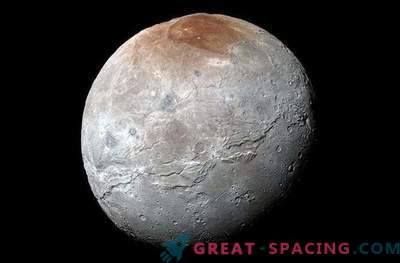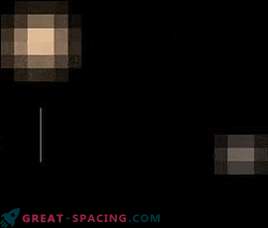
The crater was named Organa (highlighted in green). It is rich in frozen ammonia and is located on the largest satellite of Pluto Charon.
Scientists analyzing high-resolution data obtained from the New Horizons apparatus found curious information about the crater on the largest satellite of Pluto, Charon.
In a false color image above the Organ crater (the crater is not really green), high concentrations of ammonia accumulate around Pluto. Ammonia ice-covers the crater, which is a unique discovery in observations of the surface of Charon. The ice contrasts sharply with the spectroscopic composition of the surrounding landscape.
Just below the Organ is the Skywalker Crater, which does not contain a strong indicator of ammonia and ice, but contains water ice, which is common on Charon.
“Why do the two craters have a similar appearance and size, but differ in composition of the contents? We have different ideas about ammonia in the Organ. The crater may be younger, it may have been created by an ammonia blow from the rich depths of the satellite,” said Will Grandi. a scientist from the New Horizons team at the Lowell Observatory in Flagstaff, Arizona. Ammonia covering the crater, which looks like a giant paintball sign, about 3 miles in size, like the crater Skywalker. But their differences in the composition of the craters may reveal some interesting details about the geology of Charon.
"This is a unique discovery. Concentrated ammonia is a powerful antifreeze in the ice worlds, and if we assume that ammonia is from the depths of Charon, this can explain the formation of Charon's surface from the point of view of cryovolcanism, through the eruption of cold ammonia magma," said Bill McKinnon, scientist from the New Horizons team at the University of Washington at St. Louis.
Objects Kuiper Belts are forty times farther from the Sun than the Earth. They consist of ice volatile substances. Ammonia has lower freezing points than other substances, such as water, and therefore the presence of ammonia in the surface composition may indicate active flows of ice-cold materials from the inside of Charon. Today, scientists are not completely sure about the source of ammonia on Charon, but with the arrival of new images from the New Horizons apparatus, there will be a clearer picture of where Charon received its ammonia


